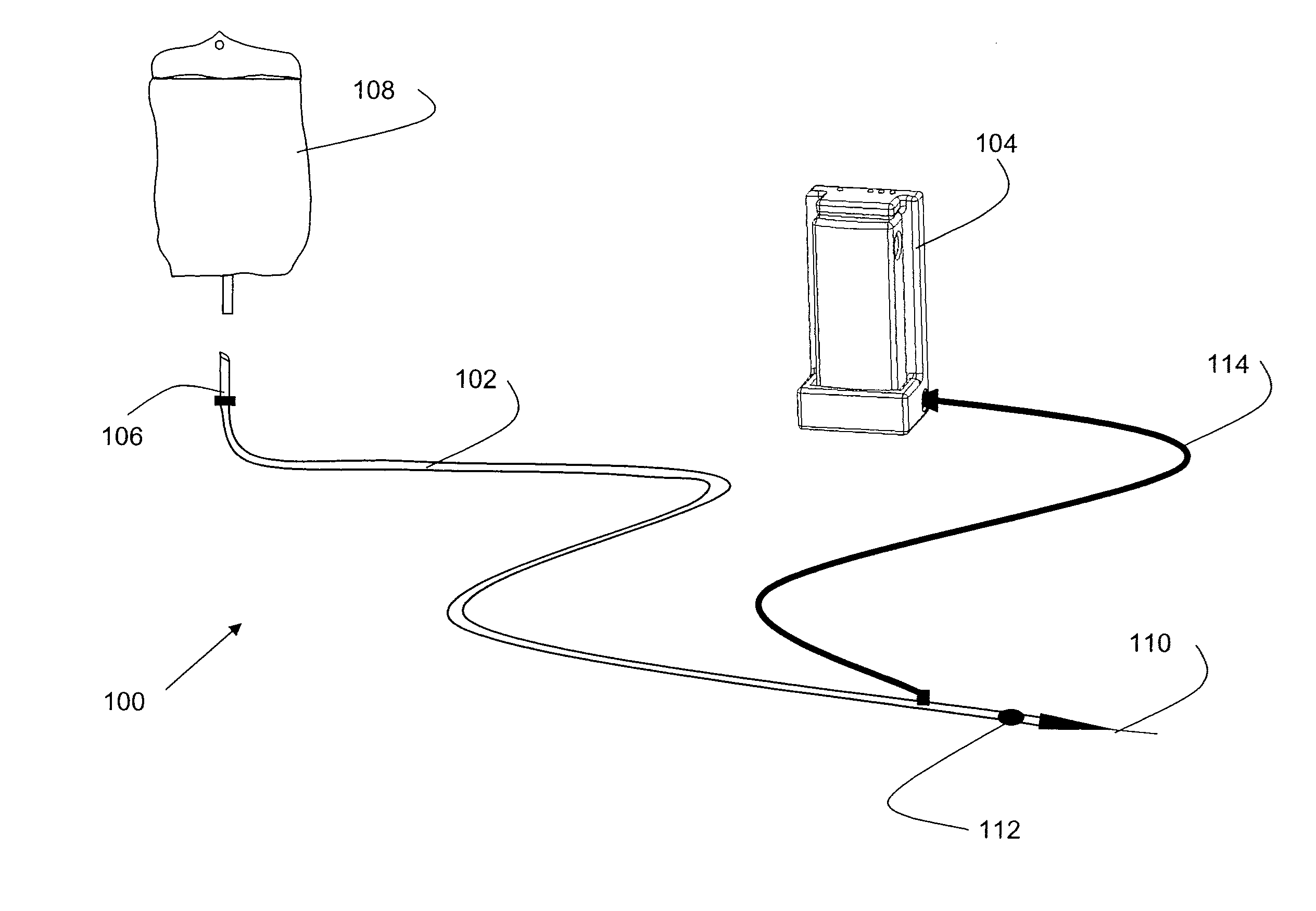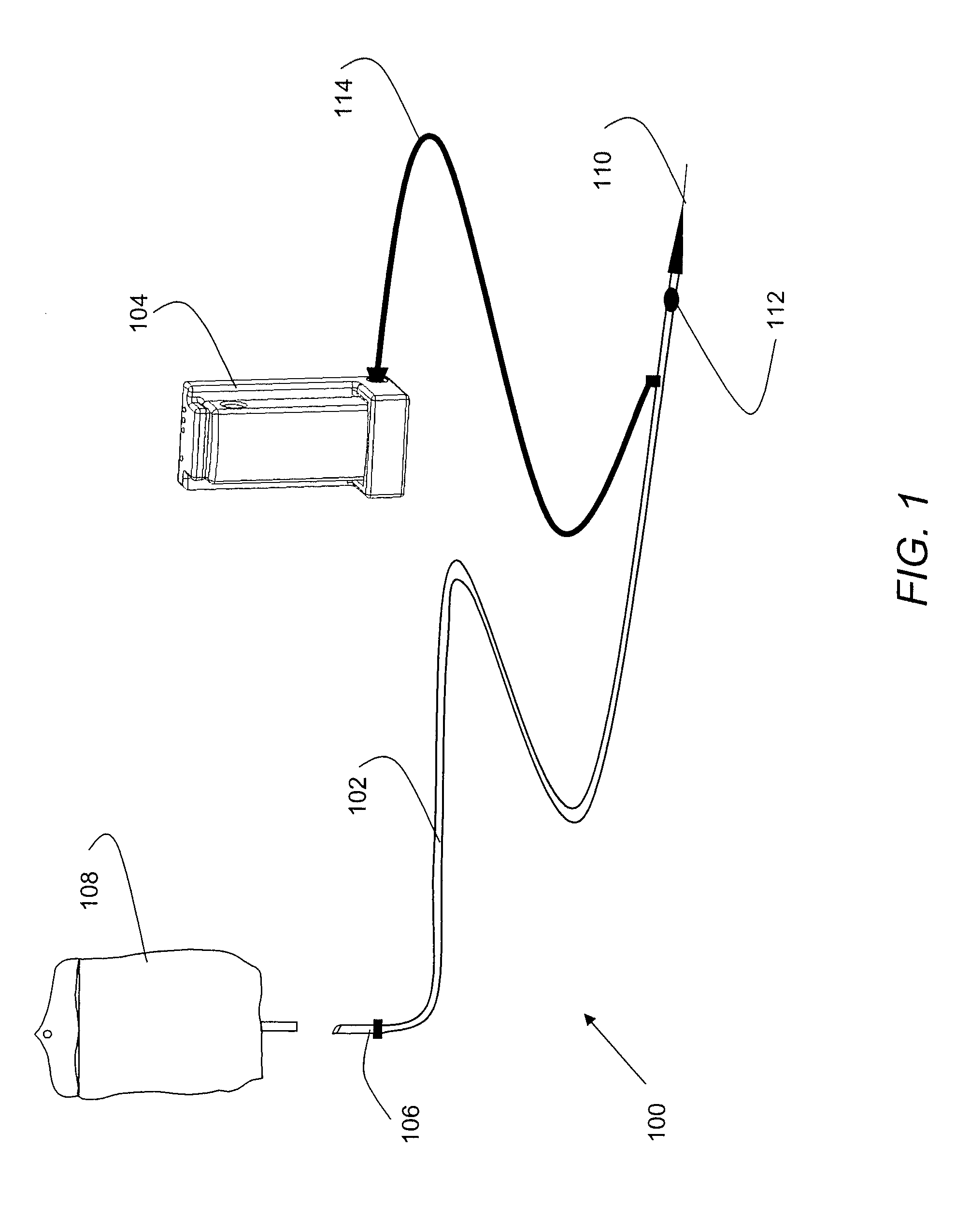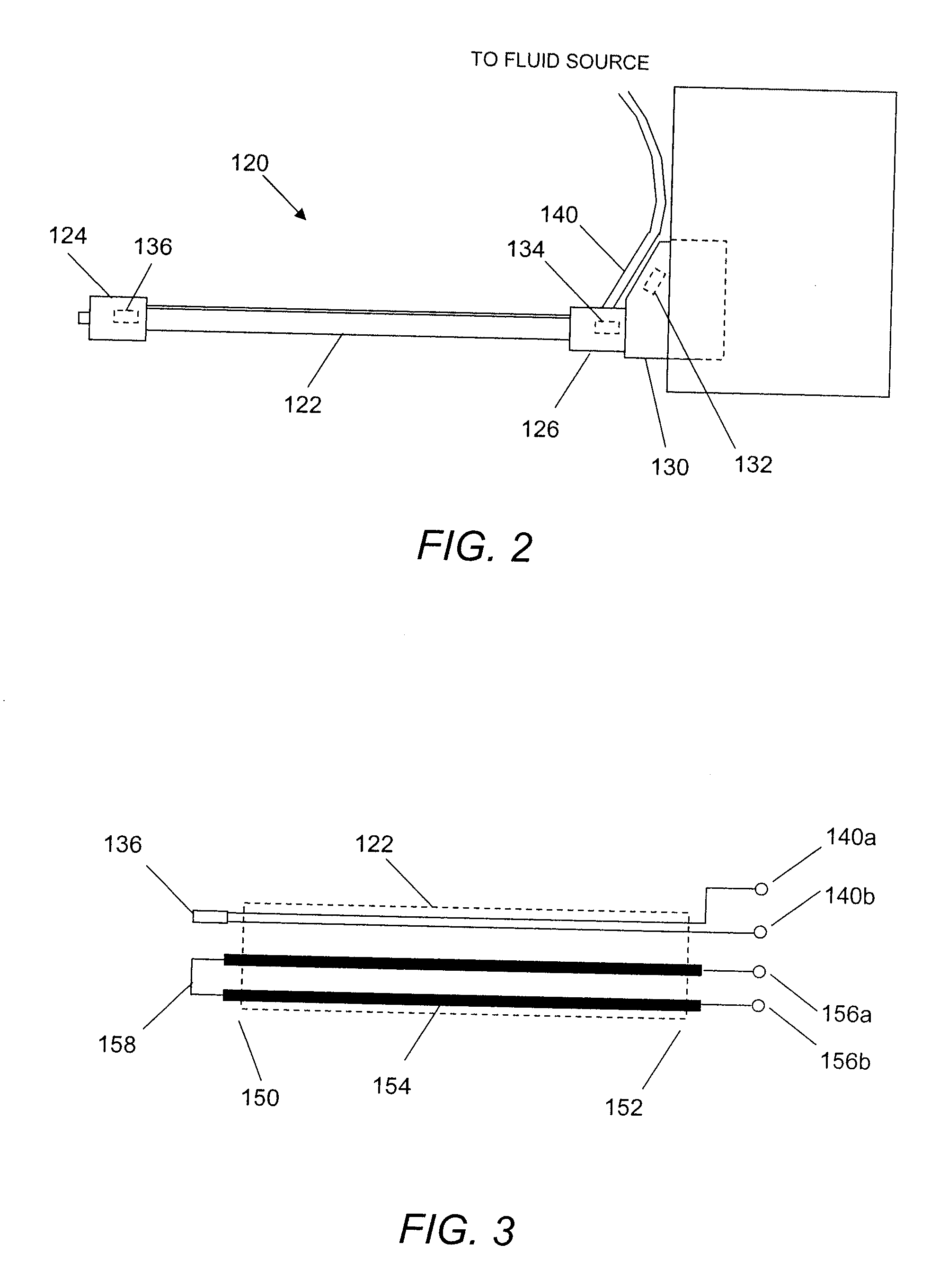Method and apparatus for warming or cooling a fluid
a fluid and apparatus technology, applied in the field of methods and apparatus for warming or cooling fluids, can solve the problems of inability of current fluid warmers lack of sensitivity and fine control in regulation, and inability to achieve optimal performance at low flow rate, etc., to achieve precise control, reduce manufacturing costs, eliminate or limit damage to fluid and/or patient
- Summary
- Abstract
- Description
- Claims
- Application Information
AI Technical Summary
Benefits of technology
Problems solved by technology
Method used
Image
Examples
Embodiment Construction
[0044]A description of preferred embodiments of the invention follows.
[0045]As shown in FIG. 1, some of the embodiments of the present invention include the following features. A fluid warming system 100 may include a fluid delivery line 102 and a controller 104. The system may further include a lead tube 106, comprised of standard medical grade tubing, one end of which is attached and sealed to the control end of the fluid delivery line, using commonly know techniques such as solvent bonding or barbed tube fittings. A luer lock 108 may be connected to the other end of the lead tube, and may be used to fluidly connect the fluid delivery line to a container 112 (e.g., bag) of fluid for delivery to the body of a patient. Such luer locks may include those disclosed in U.S. Pat. Nos. 5,620,427, 5,738,144 and 6,083,194, each of which is herein incorporated by reference. Each of the luer locks is preferably attached to the fluid delivery line and forms a sterile and / or airtight seal there...
PUM
 Login to View More
Login to View More Abstract
Description
Claims
Application Information
 Login to View More
Login to View More - R&D
- Intellectual Property
- Life Sciences
- Materials
- Tech Scout
- Unparalleled Data Quality
- Higher Quality Content
- 60% Fewer Hallucinations
Browse by: Latest US Patents, China's latest patents, Technical Efficacy Thesaurus, Application Domain, Technology Topic, Popular Technical Reports.
© 2025 PatSnap. All rights reserved.Legal|Privacy policy|Modern Slavery Act Transparency Statement|Sitemap|About US| Contact US: help@patsnap.com



